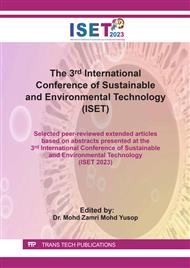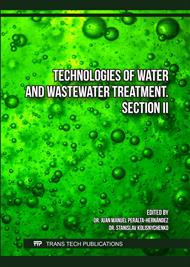p.45
p.55
p.63
p.73
p.91
p.97
p.103
p.119
p.133
Phytoremediation of Zinc Ions from Aquatic Macrophytes
Abstract:
Heavy metal pollution has been a primary environmental concern that arises from various human activities, including industrial development and technological advancement in manufacturing processes. Conventional wastewater treatment technologies for addressing heavy metals from industrial effluents involve using expensive and hazardous chemicals, which create secondary pollution if the disposal of the used absorbent is not appropriately handled. Phytoremediation is an alternative way for wastewater treatment towards green and sustainable development. This study investigated the duckweed uptake ability from the Lemnaceae family and its surface morphology after phytoremediation. Overall, the studied duckweeds demonstrated the ability to remove the zinc ions from the synthetic wastewater with an initial zinc concentration of 10 mg/L and 300 mg/L at the ambient conditions with a 16:8 hours photoperiod. The highest zinc ions removal rate from 300 mg/L zinc synthetic wastewater was performed by Wolffia arrhiza on Day 5 (69.16 %), followed by Lemna minor (58.88 %) and Spirodela polyrhiza (50.52 %). The removal of zinc ions can be proven by the surface morphology of the duckweeds, in which numerous particles attached to the duckweeds can be observed through scanning electron microscopy (SEM) images after phytoremediation. The zinc weight percent in all the studied species increased after phytoremediation. Hence, this study concludes that duckweed species can be chosen as accumulators during phytoremediation to remove zinc ions from the sources within a short period.
Info:
Periodical:
Pages:
133-137
Citation:
Online since:
December 2024
Authors:
Keywords:
Price:
Сopyright:
© 2024 Trans Tech Publications Ltd. All Rights Reserved
Share:
Citation:




